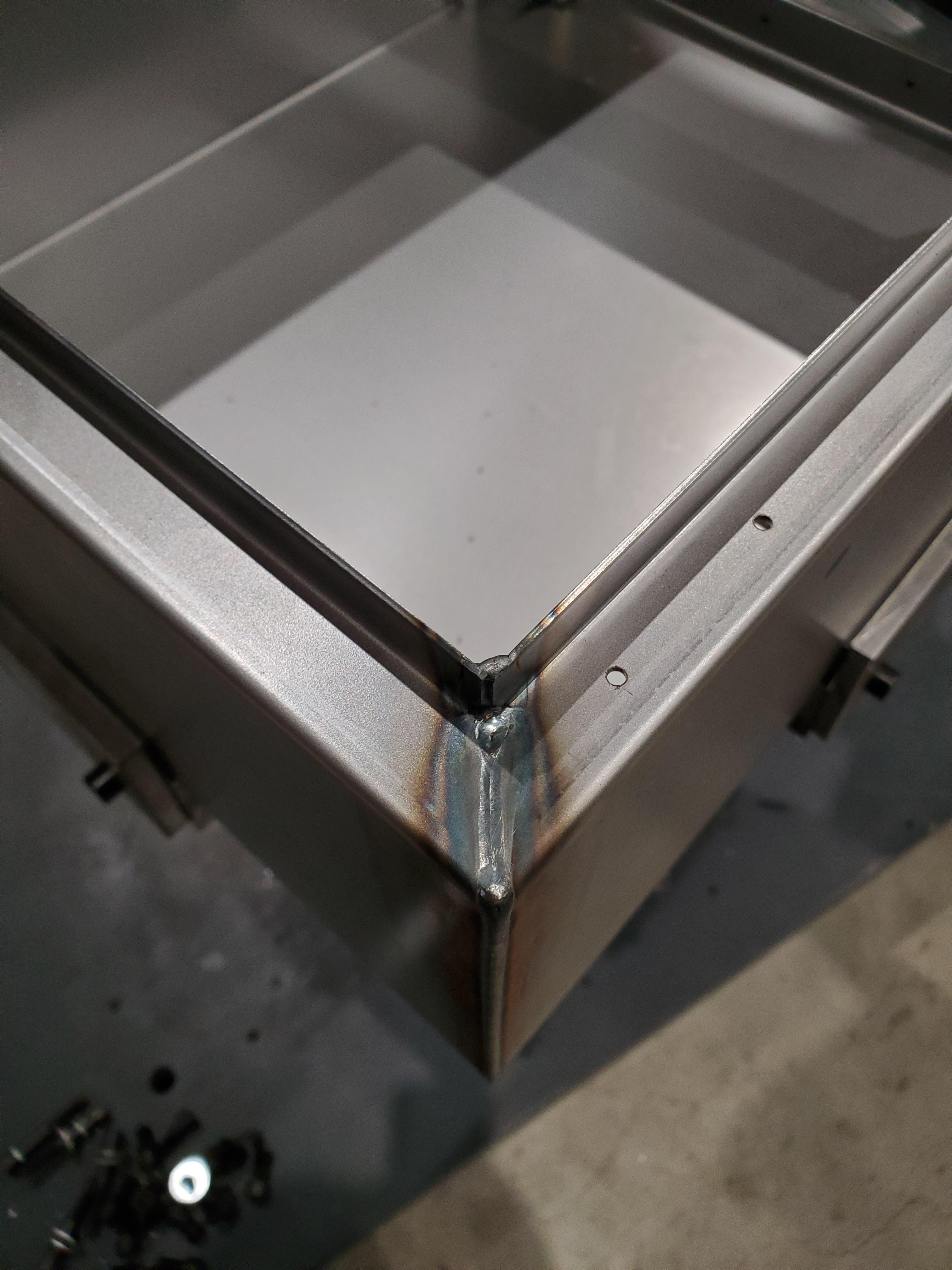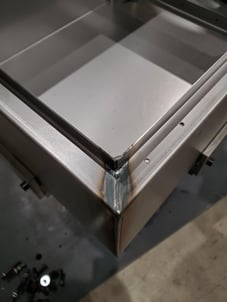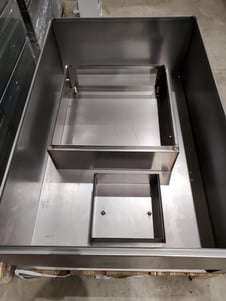
From detailed sanding tasks to simple weld removal robotics have a place in finishing. We will take a look at an enclosure application and touch on some of the main points that the company was looking for and how we got there. As always I respect the privacy of the people I work with and to that I will not share more than the company involved approved. So I can not show the final system in detail but can give a good idea of it in general.


In this case it was a mixture of sizes but each needed the same basic process. After welding grind down the welds and touch a few areas to ease the installation of seals. The initial tests were done with a simple fixed table fixture to test the process and results. The final system has a fixture that rotates the part allowing both ends to be processed quickly with out over complicating the process. Due to the size range it was decided to use a robot mounted tool rather than lifting the parts to the abrasives. This eased loading and removed the time needed for the robot to check positioning.
This is a video of one of the very early tests that shows the motions and a very basic fixture.
For this company the enclosures are painted so finish was not a high priority. 100 grit abrasive was used in a single pass of each motion. This removed the weld and left an even surface for painting. The extra touches to the corners allowed the seals to be installed with far fewer tears than the manual process cutting the amount of damaged seals and later water leak issues.
The company was able to achieve the desired result in well under 60 seconds per enclosure. They were able to reallocate the 9 people that were hand finishing the enclosures cutting the labor massively. They also saw large improvements in rejected parts, warranty claims, finish adhesion as well as total volume produced. Even with a more simple application like weld grinding it can be much more than labor savings. They were facing near $60,000 per month in rejected parts and that is now gone. They now have two of these systems running and a third is currently in production to increase volumes further.
When you look to automate processes it is vital to work with some one who has experience. A poorly implemented or designed process with poor support is a path to frustration and lost profit. Its too often I see companies struggle to make a poorly designed process work spending good money after bad on poor results. The design and testing up front make all the difference and is one of the most important phases in any automation project. Be clear about what your end goals are and be active in the process. There is no one size fits all answer and it takes skill and effort to get to the right answer.
If you have any questions or are dealing with an automation project of your own please feel free to ask any questions. I am always happy to provide advice and help with even the toughest problems.
Joe Amick
joe@ammachinerysales.com
Topics graining sheet metalmetal finishingautomotiveweld grinding